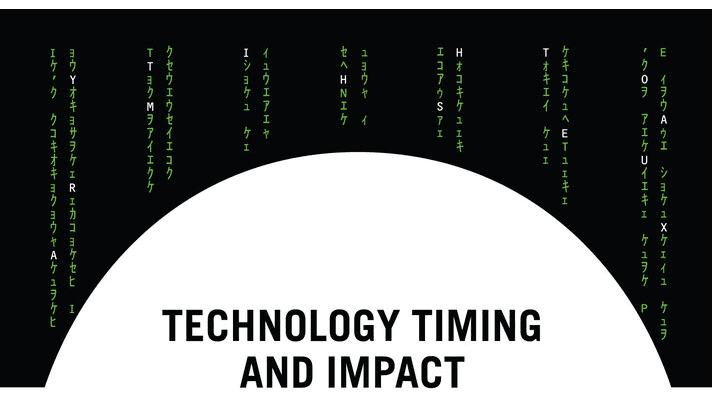
19 Apr CHAPTER FOUR
The physical book has been updated to version 6 but this is the original version of chapter 4.
It’s surprising that, in private equity, IT is almost synonymous with technology. Nothing could be further from the truth. There’s a lot more that PE can do with tech than implement back-office infrastructure.
Digital transformation is the transformation of a traditional company into a digital-traditional company by implementing a series of digital initiatives. Digital means technology, but in this context it’s important to distinguish the different types of technologies that companies can put to work and when these technologies have the most impact.
It’s surprising that, in private equity, IT is almost synonymous with technology. Nothing could be further from the truth. There’s a lot more that PE can do with tech than implement back-office infrastructure.
For our purposes, there are three levels of technology: low tech, mid tech and high tech (Figure 4.1). We will discuss what they are, how they create value and the best time to use them during the life cycle of the portfolio company. But mostly we will discuss the biggest moneymaker, smart digital transformation, and how its high technologies are used to create value.
We begin by defining the tech in each level.
LOW TECH
- IT: Information technology is the plumbing (networking) that connects compute devices (computers, phones) to each other, storage (local, network, cloud) and business systems. In digital transformation the IT and OT (operating technology) networks connect the equipment that makes the smart product or is the network in the smart product.
- Business systems: Each functional group has a business system to help with its operation. Examples include BI (business intelligence) for management, CRM for sales/marketing, PLM for manufacturing and ERP for operations. In digital transformation, business systems hold the data used and produced by smart products to create and improve data science models.
Low tech, as defined here, was considered high tech in the ’80s, but since then it has faded into the background and is now in use by all companies. Infrastructure tech like this enables value creation, but it has been commoditized to the point that it rarely produces competitive advantage. Low tech is low impact when it comes to value creation for the buyout firm.
MID TECH
- Automation: Automation is used to replace repeatable human physical activities with mostly mechanical (e.g., robots, conveyers) and electronic (e.g., cameras) devices. These devices are controlled by simple software within a closed and proprietary network. In digital transformation the industrial internet of things or Industrie 4.0 is used to orchestrate these automated devices based on operating efficiency models and others.
- Robotic process automation: RPA is used to replace repeatable human keyboard actions with software (called bots) that control one or more app interfaces. It is usually used to automate back-office tasks, such as inputting an invoice, that were previously done manually. A digital transformation initiative could have the smart product tell the RPA to submit a support ticket based on a smart product event.
- Digital marketing: This is a process for automating repeatable demand generation tasks. It uses email, social, web, search, online advertising and other digital tools to fill and manage the sales and marketing funnel. An example is an automated email sequence designed to move the prospect down the funnel. A digital transformation initiative could gather customer data from the smart product to personalize marketing communications.
- Ecommerce: Electronic commerce automates the buying and selling of products/services over the internet. An example is the storefront on a corporate website. A digital transformation initiative could have the smart product automatically order and bill a customer when a new consumable, part or product is needed or predicted to be needed.
For each stage in a company’s life cycle, there is a class of technology that delivers the greatest impact to value creation. From the perspective of the mature company, low tech has a low impact, mid tech has mid-level impact and high tech has a high impact.
The common theme for this 20–30-year-old class of technology is automation. Automating physical activity, automating keyboard activity, automating marketing and automating sales. Automation improves enterprise value by increasing EBITDA by reducing COGS and OPEX. It is a form of operating efficiency that improves output, capacity and performance, yielding expanded margins. This is good, but margin expansion doesn’t generally have the same impact on enterprise value as increasing sales or increasing the valuation multiple. Therefore, mid tech has a mid-level impact on value creation for the typical buyout firm.
HIGH TECH
- IoT: The internet of things is an extension of the internet into physical devices. It consists of the software-defined product (application and data science model of how the smart product creates value), the hardware-defined product (compute, storage and communications), network fabric (IT and OT networks [fog] and cloud) and external systems (external data sources and other smart products). The purpose of IoT is to digitize the physical world for data science to produce digital twins of the product’s value creation mechanism. Digital transformation gathers and processes data from a smart product’s sensors and external data to create, improve and execute data science models.
- Data science: Data science consists of two branches: analytics and AI, and is a superset of BI. Analytics is statistics, and AI today is mostly machine learning, which is statistics wrapped in probabilistic learning algorithms. Both are wrapped in a software container to produce data science models. In digital transformation, data science ingests the data from IoT to create and improve models that can look into the past to make sense of what happened, understand what’s happening in the present and look into the future to make predictions of what may happen. In the context of cognitive automation, it can be used to replace repeatable human perception activities such as looking for signs of defects as discrete or process products come out of production/manufacturing.
- Digital twin: A digital twin here consists of a federation of data science models that together mathematically simulate a part, product or system. In digital transformation the digital twin describes how the product produces value. The digital twin’s value models simulate physical, biological or chemical processes. For example, in Chapter 2, how the road roller compresses asphalt was simulated with a usability model. This model is part of the road roller’s digital twin.
•••
The book’s original 8 chapters are freely available on this site if you register with the form below checking “Send book’s intro chapter & book password and add me to your mailing list!” After registering we’ll email you the book password to access all the chapters.
When you have the book password click here to continue reading this chapter.
However, if you would like the full book, updated, formatted and bound, you can








